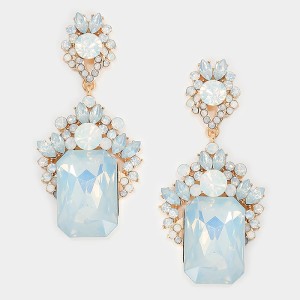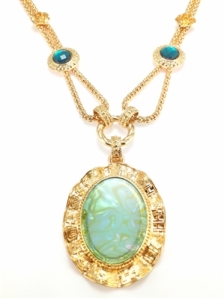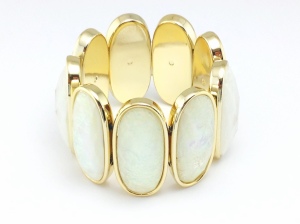Tags
14th Anniversary, 14th Wedding Anniversary, Birthstone, Birthstone Accessories, Birthstone Jewelry, Birthstones, Fourteenth Anniversary, Fourteenth Wedding Anniversary, Gemstone, October Birthday Accessories, October Birthday Jewelry, October Birthstone, October Birthstone Accessories, October Birthstone Jewelry, Opal, Opal Accessories, Opal Birthstone, Opal Jewelry
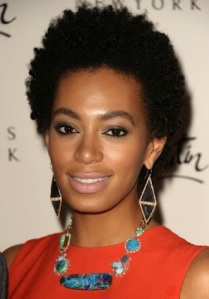
Solange Knowles wearing a beautiful Opal Necklace.
For those with October birthdays, you’ve been graced with the kaleidoscopic gem Opal. Not only is opal beautiful in color, but legend associates this precious stone with good luck and we all need a dose of that sometimes.
The name “opal” originates from the Greek word opallios, which means “to see a change in color.” It’s actually is very fitting name for this gem, as its play of colors can simulate shades of any stone. Back in the 1960s, scientists discovered that opal was composed of microscopic silica spheres that diffract light to display various colors of the rainbow, which ultimately explains opal’s characteristic “play-of-color.”

Iman wearing Triple Boulder Opal Earrings.
As a result, these particular flashy gems are called “precious opals;” those without play-of-color are “common opals.” Nonetheless, dozens of opal varieties exist, but only a few i.e. Fire Opal and Boulder Opal are universally recognized. Moreover, opals are often referred to by their background “body color”…black or white.
Australia is the classic country of opal’s origination. As a result of Australia’s seasonal rains soaking the parched outback, silica deposits were carried underground into cracks between layers of rock. Subsequently, when the water evaporated, these deposits formed opal. Sometimes, silica seeped into spaces around wood, seashells and skeletons, resulting in opalized fossils. Since the discovery of opal in Australia around 1850, the country has produced 95% of the World’s supply.

Jennifer Hudson wearing Sutra Opal Earrings.
Likewise, opal is also mined in Mexico, Brazil, Honduras, Ethiopia, the Czech Republic and parts of the U.S., including Nevada and Idaho. Conversely, the water content of opal can range from 3 to 21%, which is usually between 6 and 10 in gem-quality material. In addition, the water content combined with hardness makes opal a 5.5 to 6 on the Mohs scale, making opal a delicate gem that can crack or “craze” under extreme temperature, dehydration or direct light. The world’s largest and most valuable opal is the “Olympic Australis,” which came from Coober Pedy, Australia in 1956, during the Olympic Games in Melbourne. It was valued at $2.5 million in 2005 and this gem measures 11 inches long and weighs 17,000 carats, making it equivalent to 7.6 pounds
According to Arabic legend, opals fell from the sky in bolts of lightning. However, Australian aborigines, meanwhile, believed that the creator came to earth on a rainbow, leaving these colorful stones where his feet touched the ground. What’s more, during the Middle Ages, people believed that opal possessed the powers of each gemstone whose color appeared in its sheen, making it a very lucky stone for the wearer. In contrast, Sir Walter Scott’s 1829 book, “Anne of Geierstein,” transformed opal’s lucky perception because the story featured an enchanted princess who wore an opal that changed colors with her moods. He attested that a few drops of holy water extinguished the stone’s magic fire and the woman soon died. As a result, people began associating opals with bad luck so within a year after publication of Scott’s book, opal sales in Europe drastically fell by 50%.

Kerry Washington wearing Fire Opal Ring.
Like diamonds, opals can be evaluated by color, clarity, cut and carat weight. But these unique gems also have several additional conditions to consider. Color is the key factor of opal quality: both the background “body color” and the flashing “play-of-color.” Dark backgrounds provide more contrast against vivid play-of-color, making black opal more highly valued than milky white varieties. As well, pattern is another factor unique to opal. Descriptive names like stained glass, peacock, rolling fire and Chinese writing distinguish opal patterns. Gemologists typically prefer large, concentrated patches over small specks. Different opal varieties have varying clarity standards. Crystal opals should be transparent, while opacity makes black opals more valuable. A cloudy, milky haze lowers any opal’s value, and may indicate instability. Fine opals are often cut into irregular shapes to emphasize play-of-color. When possible, opals should be cut cabochon with rounded domes. But most opal comes in thin layers, which are commonly mounted on another dark stone like onyx or obsidian (as a doublet) and sometimes capped with clear glass or plastic (as a triplet) to make this fragile gem more wearable.
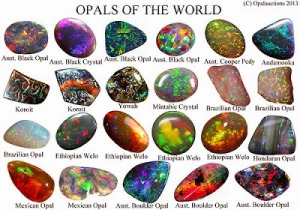
A variation of Opals from around the World.
Opal has been a good luck charm for centuries despite superstitions that consider it lucky only for people born in October, and unlucky to anyone else. In fact, opal’s kaleidoscopic play-of-color, can suit many changing moods and tastes, making this gem appropriate for anyone. Accordingly, It is also the traditional gift to celebrate 14th wedding anniversaries. Therefore, if you’re purchasing opal for yourself or a loved one, ultimately, you’re making an investment in something beautiful with symbolic attributes and the wearer gets to serendipitously accessorize for fall and winter with a sense of good fortune, opportunity and victory.
Below are some of our favorite opal pieces:
Contact us anytime for jewelry & accessories inquiries…
Phone: 917-933-1747
E-mail: info@madisongems.com
Website: www.madisongems.com
Follow our Gem Adventure on:
Facebook | Twitter | Instagram

